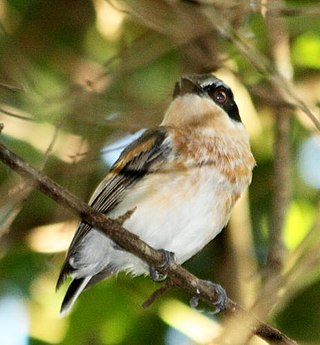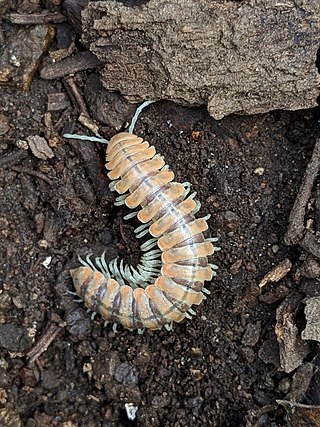
Shelley Winters was an American film actress whose career spanned seven decades. She won Academy Awards for The Diary of Anne Frank (1959) and A Patch of Blue (1965), and received nominations for A Place in the Sun (1951) and The Poseidon Adventure (1972). She also appeared in A Double Life (1947), The Night of the Hunter (1955), Lolita (1962), Alfie (1966), Next Stop, Greenwich Village (1976), and Pete's Dragon (1977). In addition to film, Winters appeared in television, including a tenure on the sitcom Roseanne, and wrote three autobiographical books.

Catopsalis is a genus of extinct mammal from the Paleocene of North America. This animal was a relatively large member of the extinct order of Multituberculata. Most Multituberculates were much smaller.

Starlings are small to medium-sized passerine birds in the family Sturnidae common name of Sturnid Passerines are Starling Family The Sturnidae are named for the genus Sturnus, which in turn comes from the Latin word for starling, sturnus. The family contains 128 species which are divided into 36 genera. Many Asian species, particularly the larger ones, are called mynas, and many African species are known as glossy starlings because of their iridescent plumage. Starlings are native to Europe, Asia, and Africa, as well as northern Australia and the islands of the tropical Pacific. Several European and Asian species have been introduced to these areas, as well as North America, Hawaii, and New Zealand, where they generally compete for habitats with native birds and are considered to be invasive species. The starling species familiar to most people in Europe and North America is the common starling, and throughout much of Asia and the Pacific, the common myna is indeed common.

Francolins are birds in the tribe Gallini that traditionally have been placed in the genus Francolinus, but now commonly are divided into multiple genera.

Lamprotornis is a large genus of glossy-starlings all of which occur in Africa south of the Sahara. They have glossy blue or green upper parts, which is due to hollow melanin granules arranged in a single layer near the feather barbule's surface. This unique arrangement led to some glossy starlings formerly placed in the genus Spreo being transferred to Lamprotornis, since they shared this feature.

The Congo serpent eagle is a species of bird of prey in the family Accipitridae. It is the only member of the monotypic genus Dryotriorchis, although it was formerly placed in Circaetus. This species is distributed across the African tropical rainforest, including upper and lower Guinean forests. This serpent eagle specializes in hunting in these forests’ dark understories. It has two subspecies, the nominate subspecies Dryotriorchis spectabilis spectabilis and Dryotriorchis spectabilis batesi. Though monotypic, it appears to be very closely related to Circaetus. This hawk is a medium-sized bird with distinctive short, rounded wings and a long, rounded tail. It is varying shades of brown on its back and has a slight crest. Its breast is white with variable amounts of a rufous wash and, in the nominate subspecies, is covered in round, blackish spots. The subspecies D. s. batesi only has these dots on its flanks. The Congo serpent eagle closely resembles Cassin's hawk-eagle, and some ornithologists believe that this likeness is a rare example of avian mimicry. It is a very vocal raptor, and often is one of the most heard species in its habitat.

Stark's lark is a species of lark in the family Alaudidae. It is found in Angola, Botswana, Namibia, and South Africa. Its natural habitats are dry savannah and subtropical or tropical dry shrubland. Captain George Shelley named the species in honour of Arthur Stark.

Shelley's greenbul or Shelley's bulbul, is a species of the bulbul family of passerine birds. It is found in east-central Africa. Its natural habitats are subtropical or tropical dry forests and subtropical or tropical moist montane forests.

Woodwards's batis or the Zululand batis is a species of small bird in the wattle-eyes family, Platysteiridae. It occurs in southeastern Africa where it is found in woodlands and forests.

The marsh tchagra or blackcap bush-shrike is a species of passerine bird placed in the monotypic genus Bocagia in the family Malaconotidae. It is native to marshes in the tropics and subtropics of Africa. It is sometimes placed in the genus Tchagra.

Frankenstein; or, The Modern Prometheus is an 1818 novel written by English author Mary Shelley. Frankenstein tells the story of Victor Frankenstein, a young scientist who creates a sapient creature in an unorthodox scientific experiment. Shelley started writing the story when she was 18, and the first edition was published anonymously in London on 1 January 1818, when she was 20. Her name first appeared in the second edition, which was published in Paris in 1821.

Shelley's sparrow, also known as Shelley's rufous sparrow or the White Nile rufous sparrow, is a sparrow found in eastern Africa from South Sudan, southern Ethiopia, and north-western Somalia to northern Uganda and north-western Kenya. Formerly, it was considered as a subspecies of the Kenya sparrow. This species is named after English geologist and ornithologist George Ernest Shelley.

Dinokanaga is a small genus of scorpionfly belonging to the extinct family Dinopanorpidae. The six species D. andersoni, D. dowsonae, D. hillsi, D. sternbergi, D. webbi, and D. wilsoni have all been recovered from Eocene fossil sites in British Columbia, Canada, and Washington state, United States.

Erpobdella is a genus of leeches in the family Erpobdellidae. Members of the genus have three or four pairs of eyes, but never have true jaws, and are typically 20–50 millimetres (0.8–2.0 in) long. All members do not feed on blood, but instead are predators of small aquatic invertebrates, which they often swallow whole.

Sphingobium chlorophenolicum is a species of gram-negative bacteria. The type strain was first identified from North American soils contaminated with chlorophenols and was formally described in 1995. It is of interest to researchers because it can mineralise the toxic pesticide pentachlorophenol (PCP).

Xystocheir is a genus of millipedes in the family Xystodesmidae. The genus is endemic to California in the United States, where it is distributed in the Coast Ranges and the Sierra Nevada.

Emarginata is a genus of birds in the Old World flycatcher family Muscicapidae that occur in southern Africa.

Xystocheirini is a tribe of flat-backed millipedes in the family Xystodesmidae. There are about 5 genera and more than 40 described species in Xystocheirini.

Sigmoria is a genus of flat-backed millipedes in the family Xystodesmidae. There are more than 40 described species in Sigmoria.



















